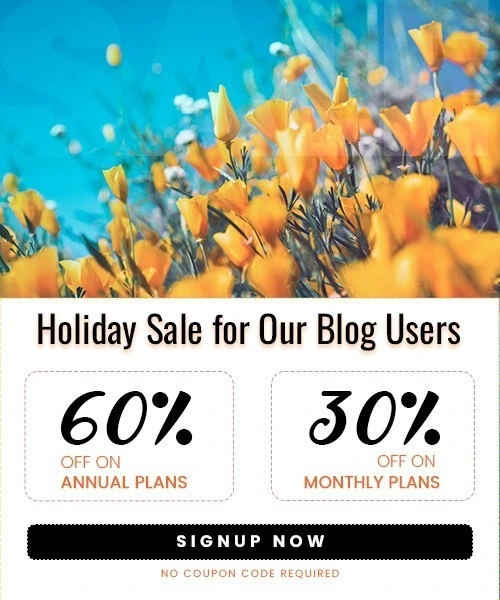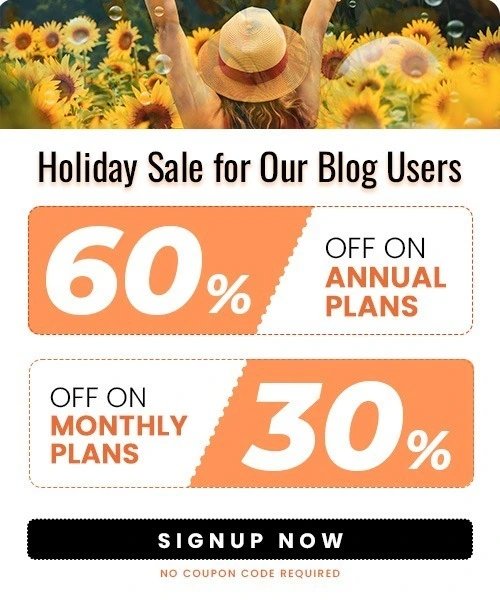Etsy Offsite Ads Explained (2025): A Complete Guide for Sellers
Last Updated on October 17, 2025 by Himanshu Rawat
If you’re an Etsy seller, you’ve seen the term “Offsite Ads”. It’s one of the more debated features on the platform, offering promise for increased exposure, but also raising questions about cost and control.
Whether you’re just starting your Etsy shop or already managing multiple listings, understanding how Etsy Offsite Ads work in 2025 can make a real difference to your bottom line. In this post, we’ll break down what they are, how they work, and whether they’re worth it for your business.
What Are Etsy Offsite Ads?
Etsy Offsite Ads are advertisements that Etsy purchases on your behalf across external platforms like:
- Bing
These ads feature your product listings and are shown to people outside of Etsy, bringing in shoppers who may have never visited Etsy otherwise. The best part? You don’t pay unless you make a sale.
This performance-based model is appealing to many sellers, especially those who don’t have the time or expertise to run paid ad campaigns themselves.
How Do Offsite Ads Work?

Here’s a breakdown of how Etsy’s Offsite Ads operate:
Etsy covers the upfront cost of advertising your listings across third-party platforms like Google, Facebook, Instagram, and Pinterest. These ads help attract new shoppers who aren’t already browsing Etsy.
When a potential customer sees your product in one of these ads and clicks through to your Etsy listing, Etsy tracks that interaction. If the shopper makes a purchase from your shop within 30 days of clicking the ad, Etsy considers that sale to have resulted from the ad and charges you an Offsite Ads fee.
The Advertising Fee
- 15% fee if your shop made less than $10,000 USD in the past 12 months.
- 12% fee if your shop made $10,000 USD or more in the past 12 months, and at this level, participation is mandatory.
This fee is calculated as a percentage of the total order amount, before shipping and taxes.
For example, If someone clicks an Offsite Ad and buys a $200 product from your shop, Etsy will charge you $30 (at the 15% rate) or $24 (at the 12% rate), in addition to their regular transaction and processing fees. If the same customer returns and places additional orders from your shop within the 30-day attribution window, each of those purchases will also incur the Offsite Ads fee, since they are still linked to the original ad click.
Who Can Opt Out of Offsite Ads?
Not everyone has a choice.
- If your shop made under $10,000 in the past 12 months, you can choose to opt out of Offsite Ads at any time.
- If you made $10,000 or more, you’re automatically enrolled and cannot opt out.
This has sparked some frustration among high-performing sellers, especially those who already invest in their own marketing and don’t want to give up additional revenue.
Pros and Cons of Etsy Offsite Ads

Pros:
- Massive Reach Without Upfront Cost: Your listings gain exposure across major platforms like Google, Facebook, and Instagram without you having to pay anything upfront for the ads.
- Only Pay When You Sell: You incur advertising costs only if a sale happens as a result of the ad, reducing financial risk since you don’t pay for clicks alone.
- Hands-Off Marketing: Etsy manages the entire ad campaign setup, targeting, and bidding, so you don’t need marketing expertise or time investment.
- Potential for New Customers: Offsite Ads attract buyers who may not even be aware of Etsy or your shop, significantly broadening your customer base.
Cons:
- High Fee Percentage: The advertising fee can be as high as 15% of the sale, on top of Etsy’s other fees, which may heavily impact profit margins, especially on low-margin or lower-priced items.
- No Control Over Ads: You have no say in which listings Etsy promotes, which external platforms are used, or how ads are targeted.
- Mandatory for Top Sellers: Sellers exceeding $10,000 USD in annual sales must participate in Offsite Ads, with no option to opt out, regardless of personal preference.
- Long Attribution Window: Etsy charges the fee on sales made up to 30 days after a customer clicks an ad, even if the buyer returns later and purchases without clicking the ad again.
This blend of advantages and drawbacks makes Offsite Ads a powerful but sometimes costly tool that sellers should weigh carefully in their marketing strategy
How to Manage or Opt Out
Log in to Etsy and navigate to Shop Manager > Settings > Offsite Ads.
If your shop earns less than $10,000 per year, you’ll see an option to opt out of Offsite Ads directly from this page.
Keep in mind, you can re-enroll at any time if you decide to opt back in later.
When Do Offsite Ads Make Sense?
Offsite Ads can be a great option for newer or growing shops looking to gain exposure without paying upfront advertising costs. You only pay a fee when a sale is made through one of the ads, making it a low-risk way to reach more customers.
However, Offsite Ads may be less ideal for shops with lower profit margins, since the fees (up to 15%) can significantly eat into earnings. They may also not suit sellers who prefer complete control over their marketing spend and strategy.
Tips for Managing Offsite Ads
If you’re participating in Offsite Ads, here are a few strategies to keep your margins intact:
1. Optimize Your Listings for Quality
- Use clear, high-quality photos with clean backgrounds to meet advertising platform standards.
- Write concise and compelling titles (ideally under 40 characters) that include relevant keywords.
- Craft detailed, persuasive product descriptions that address customer questions and highlight benefits.
- Remove any watermarks or promotional text from images as these can disqualify listings from offsite ads.
2. Understand and Monitor Your Offsite Ads Performance
- Regularly check the Offsite Ads dashboard in your Shop Manager to track clicks, attributed sales, and ad spending.
- Analyze which listings perform best and take note of trends for better decision-making.
- Use this data to optimize listings and adjust your overall marketing strategy.
3. Control Your Budget and Sales Expectations
- Remember, you only pay a fee when an Offsite Ad leads to a sale, minimizing risk.
- Factor the 12–15% fee into your pricing strategy to maintain healthy profit margins.
- Start slow to see how Offsite Ads impact your sales before scaling your listings and inventory.
4. Comply with Ad Platform Policies
- Ensure your products comply with Etsy’s policies as well as advertising platform rules (Google, Facebook, Pinterest).
- Avoid listing items that could be restricted or banned on these platforms.
5. Use Offsite Ads as a Growth Tool
- Offsite Ads work well for shops aiming to reach new customers beyond Etsy’s search.
- It’s a great option for sellers who want to expand exposure without upfront ad spend or managing complex ad campaigns.
6. Be Prepared for the 30-Day Attribution
- Understand that sales made up to 30 days after a click are attributed to the ad, meaning fees can apply even for delayed purchases.
- Keep this in mind when forecasting profits and cash flow.
Is Etsy Offsite Ads Worth It?
That depends on your business model.
- If you sell high-margin or unique products, Offsite Ads can be a powerful growth tool.
- If you have tight profit margins or do your own advertising, the fees might be too steep.
- If you’re under the $10K threshold, it’s worth experimenting. You can opt out later if it doesn’t perform.
Case study example: A seller shared their experience where Offsite Ads generated nearly $60,000 in revenue from around 100,000 clicks. Even after paying the 12% Offsite Ads fee (about $7,200), plus Etsy’s other fees, they found that managing their own ads on platforms like Google would have cost significantly more.
This seller viewed the Offsite Ads as a cost-effective way to reach thousands of potential customers they wouldn’t have accessed otherwise, making the fees worthwhile for the long-term growth of their shop.
Final Thoughts
Etsy Offsite Ads offer both opportunity and risk. For some sellers, they unlock a new stream of revenue with minimal effort. For others, they feel like a costly and mandatory marketing tool with little transparency.
The key is to understand your numbers. Track how many sales are coming from Offsite Ads, what your profit margin is, and whether the added exposure is worth the cost.
As with any marketing tool, knowledge is power. Don’t be afraid to test, tweak, and take control of your business decisions even when Etsy takes some of that decision-making out of your hands.
Frequently asked questions
1. What are Etsy Offsite Ads?
Etsy Offsite Ads are paid ads that promote your listings on platforms like Google, Facebook, and Instagram. You only pay a fee when someone buys your product through one of these ads.
2. How much do Offsite Ads cost?
You pay a 12% fee per sale if your shop made under $10,000 in the last 12 months, or 15% if you made $10,000 or more. The fee is only charged when a sale happens from the ad.
3. Can I opt out of Offsite Ads?
Yes, if your shop made under $10,000 in the past 12 months. If you made $10,000 or more, participation is mandatory.
4. Where are my products advertised?
Your listings may appear on sites like Google, Facebook, Instagram, Pinterest, and Bing through Etsy’s ad network.
5. Do I get to choose which products are advertised?
No, Etsy automatically selects which listings to promote based on performance and relevance. You can’t manually control which ones are used in Offsite Ads.



